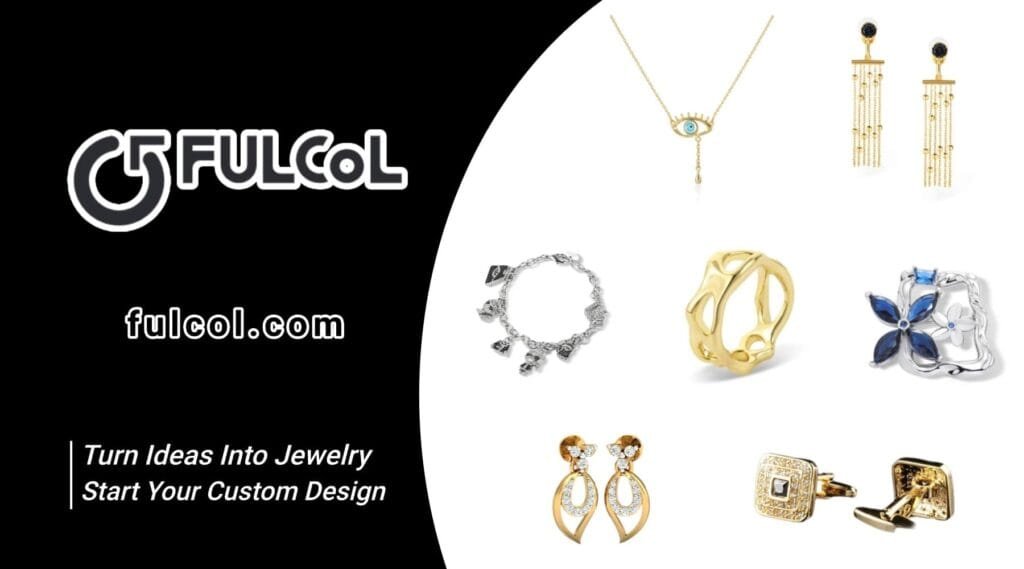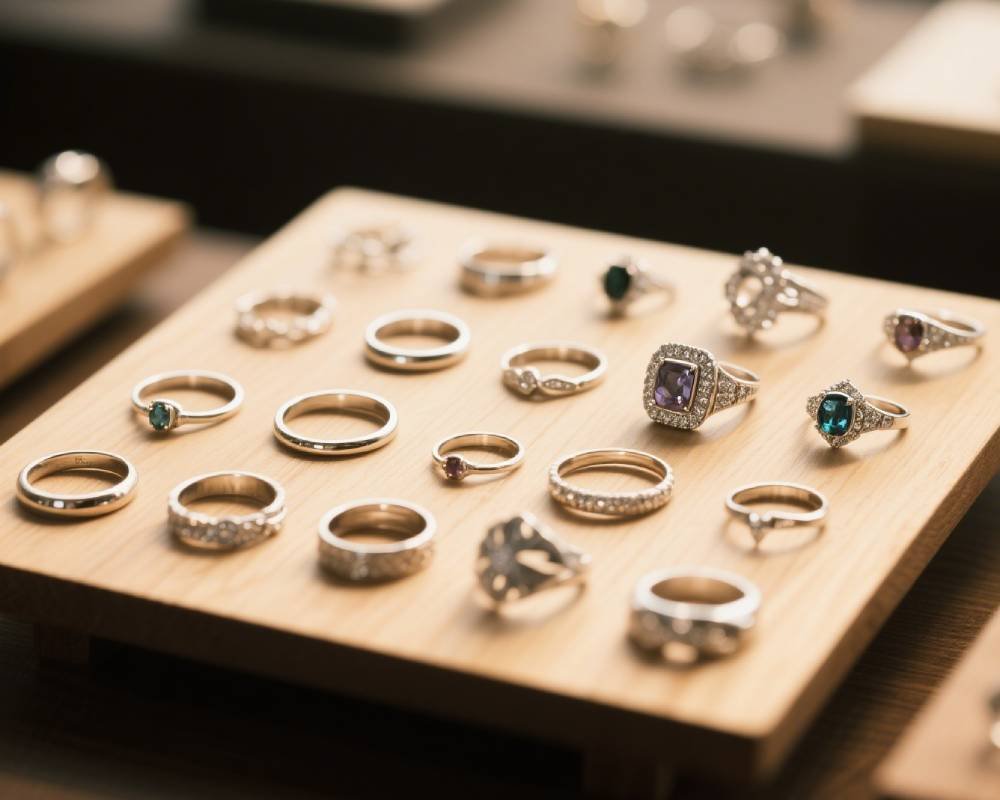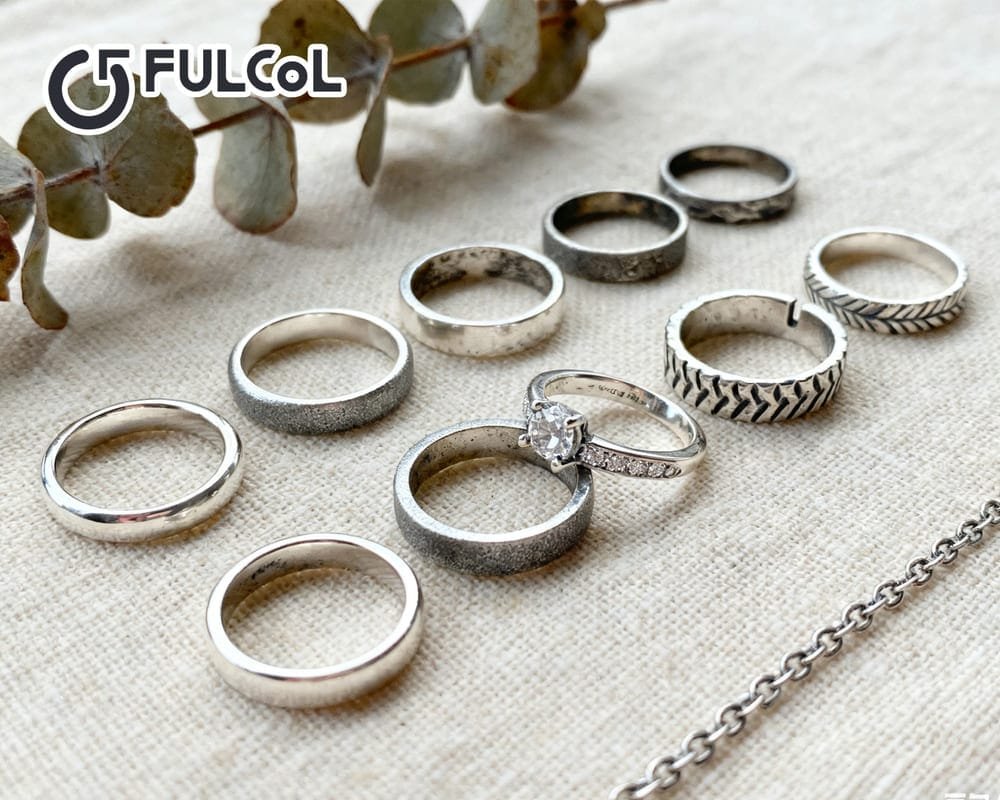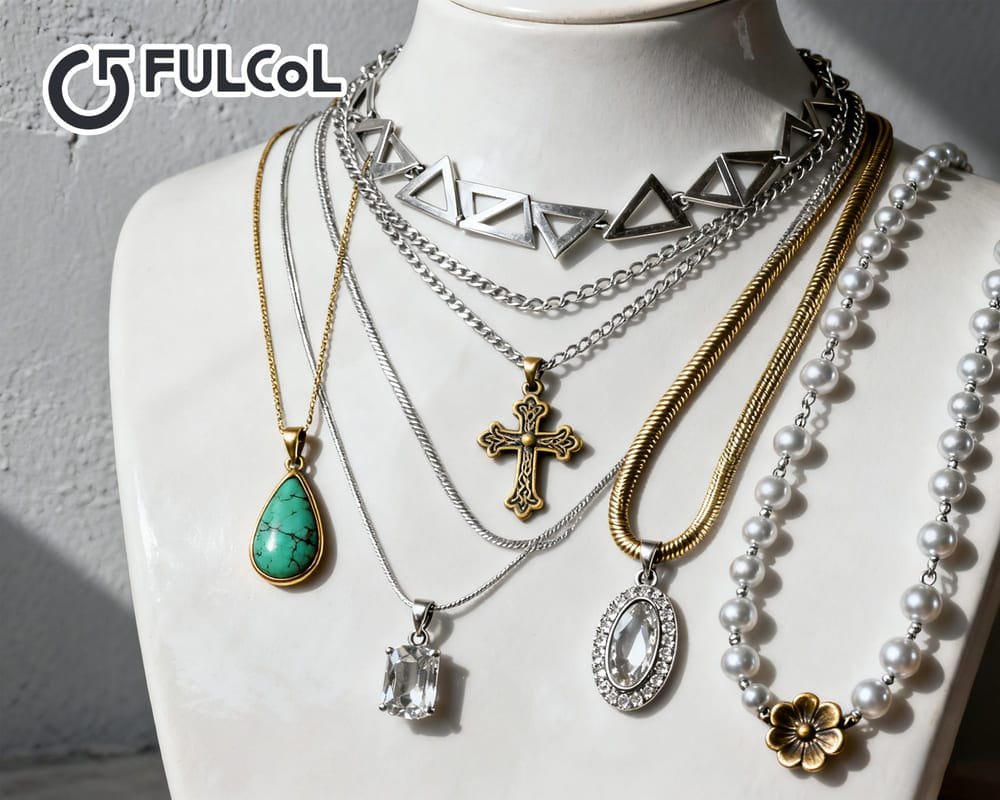In the jewelry world, 925 silver jewelry has won the favor of consumers around the world for its elegant appearance, affordable price and good processing performance. However, as market demand expands, counterfeit 925 silver products are also rampant. Some merchants use low-priced silver-plated and alloy products to impersonate 925 silver jewelry, causing consumers to buy inferior goods without knowing it, which not only affects the wearing experience, but also may cause skin allergies and other problems.
Therefore, learning how to quickly and accurately identify 925 silver jewelry is not only a basic skill that every consumer should have, but also an important way to protect personal rights and interests. Fulcol fashion jewelry manufacturers introduces 7 simple and easy identification methods in detail, without the need for advanced technology, combining scientific principles and practical skills, so that you can be more confident and calm in your daily shopping.
Table of contents
- Method 1: Look for the 925 mark or S925 mark
- Method 2: Use magnets for preliminary detection
- Method 3: Use white cloth or silver wiping cloth to test oxidation reaction
- Method 4: Perform an acid test (silver reagent method)
- Method 5: Observe the natural performance of color and gloss
- Method 6: Use a professional silver jewelry test pen
- Method 7: Consult a reputable professional jeweler
Method 1: Look for the 925 mark or S925 mark
This is the most intuitive and basic way to determine whether a piece of jewelry is 925 silver. Most regular 925 silver jewelry will be marked with a silver content mark when it is manufactured to indicate that its alloy composition meets international standards. 925 stands for 92.5% pure silver, and the remaining 7.5% is usually copper or other metals to improve hardness and durability.
Common imprint types:
- “925”
- “S925”
- “Sterling”
- “Sterling Silver”
- “AG925” (AG is the chemical symbol for silver)
How to correctly identify:
Position observation: The imprint is often engraved on hidden but easy-to-check parts of jewelry, such as the inner wall of the ring, the back of the pendant, the bottom of the earrings, etc.
Engraving quality: The authentic imprint is moderate in depth, with clear edges and is not easily erased; the imprint of counterfeit products may be stickers, reliefs or shallow engravings.
Imprint ratio: Some brands may add LOGO or letter combinations around the imprint to highlight the texture, but the “925” character should be clearly recognizable.
❗ Tip: Some imitations are also engraved with “925”, but the fake imprints are often in abnormal positions or the fonts are rough, so they should be combined with other methods for comprehensive judgment.
Method 2: Use magnets for preliminary detection
Silver is a non-magnetic metal, so it will not be attracted by magnets. This principle can help us quickly remove fake silver jewelry containing magnetic components such as iron and nickel.
Detection method:
- Prepare a small and strong magnet. It is recommended to use a neodymium magnet, which has stronger suction.
- Bring the magnet close to multiple parts of the jewelry, especially the chain buckle, inlay edge, ring and other positions.
- If the jewelry has a clear sense of adsorption, it can almost be judged as a non-silver product; if there is no reaction, it may be real silver or a non-magnetic alloy.
🔍 Note: Some non-silver alloys (such as zinc and aluminum) are also non-magnetic, so this method is only suitable for preliminary investigation and cannot be used as the only basis.
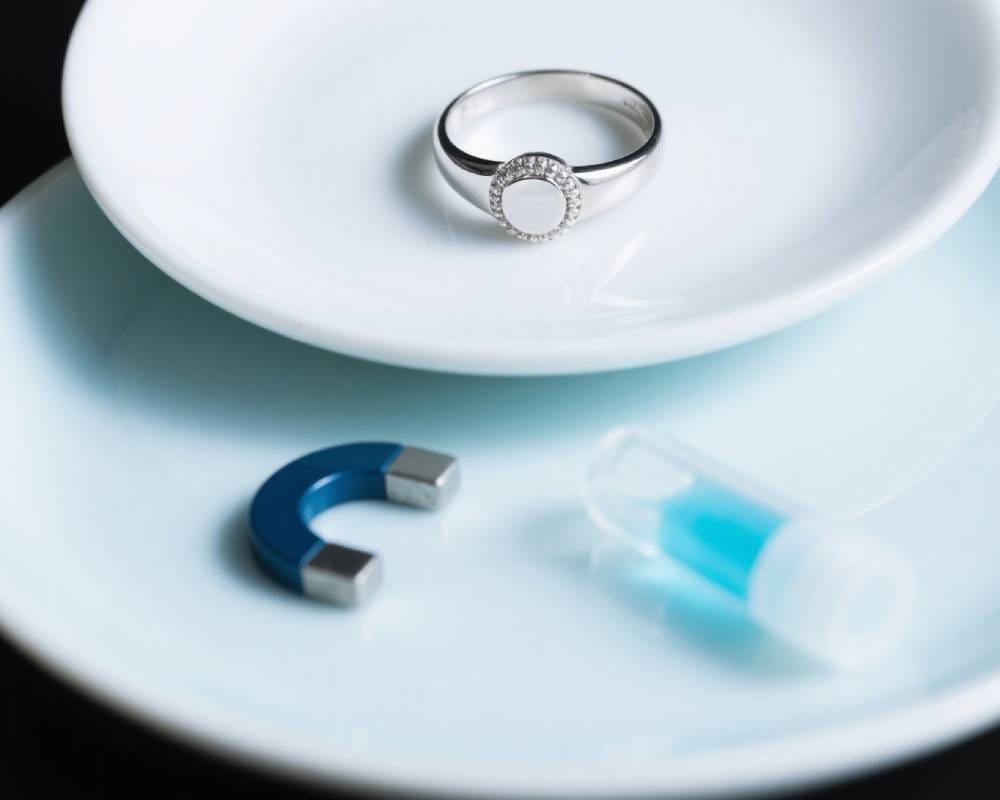
Method 3: Use white cloth or silver wiping cloth to test oxidation reaction
925 silver has natural oxidation characteristics, and it is easy to produce a black oxide layer after contacting sulfides in the air or skin. Therefore, it is a simple and practical method to detect whether oxidation marks are produced by wiping.
Testing steps:
- Use a clean white cloth or a professional silver-polishing cloth (.
- Wipe the surface of the jewelry evenly and forcefully, especially on the back or inside.
- If gray-black marks are left on the cloth, it indicates that the silver jewelry has undergone normal oxidation reaction, which is a strong signal of real silver.
⚠️ Note: New silver jewelry or surface-plated silver jewelry may not appear black in the short term because the surface has been treated with anti-oxidation; long-term non-wearing or frequent cleaning may also affect the test results.
Method 4: Perform an acid test (silver reagent method)
This is an authoritative testing method commonly used in laboratories and jewelry stores. The operation is relatively professional, but it can be performed at home and is suitable for users who value accuracy.
Tools required:
- Silver test reagent
- Sandpaper or fine needle scraper
- White ceramic sheet or test plate
Operation process:
- Slightly scrape off a layer of surface electroplating in an inconspicuous place.
- Drop a drop of silver reagent and let it stand for a few seconds to observe the reaction.
- Real silver will show a reddish brown or dark brown reaction; green indicates a high copper content; no change may be stainless steel or other materials.
🔒 Safety reminder: Always wear gloves, keep ventilation, and avoid contact between reagents and skin or eyes.
📌 Limitations: Reagents have a shelf life and are prone to failure if not stored properly. The test will cause slight damage to the jewelry and is not recommended for high-end finished jewelry.

Method 5: Observe the natural performance of color and gloss
The color of silver jewelry is different from that of silver-plated or stainless steel products. It has a warm and soft visual effect, which is one of the key bases for naked eye judgment.
Key points for identification:
- Silver color: neutral grayish white, slightly soft, not dazzling; imitations appear too bright or bluish white.
- Reflective properties: Real silver reflects evenly and not dazzling, showing a “soft matte luster”; plated jewelry reflects strongly and has a “mirror” texture.
- Aging signs: After wearing for a period of time, real silver will produce a patina formed by natural oxidation, while imitation silver may fade and peel.
👁️ Practical tips: Compare silver jewelry with stainless steel, silver-plated jewelry, etc., and look closely at the color and gloss performance, there will be obvious differences.
Method 6: Use a professional silver jewelry test pen
The silver jewelry test pen is a simple, non-destructive testing tool suitable for home users or small sellers.
Usage process:
- Calibrate the pointer or value after starting the device
- Gently touch the surface of the jewelry to read the test results; some devices use color, numbers or lights to indicate the silver content range.
👍 Advantages: Quick detection, no need to destroy the jewelry, suitable for daily testing and mobile sales.
❗ Limitation: Silver-plated jewelry may be misjudged due to the reaction of silver on the surface. It is recommended to combine other methods for cross-verification.
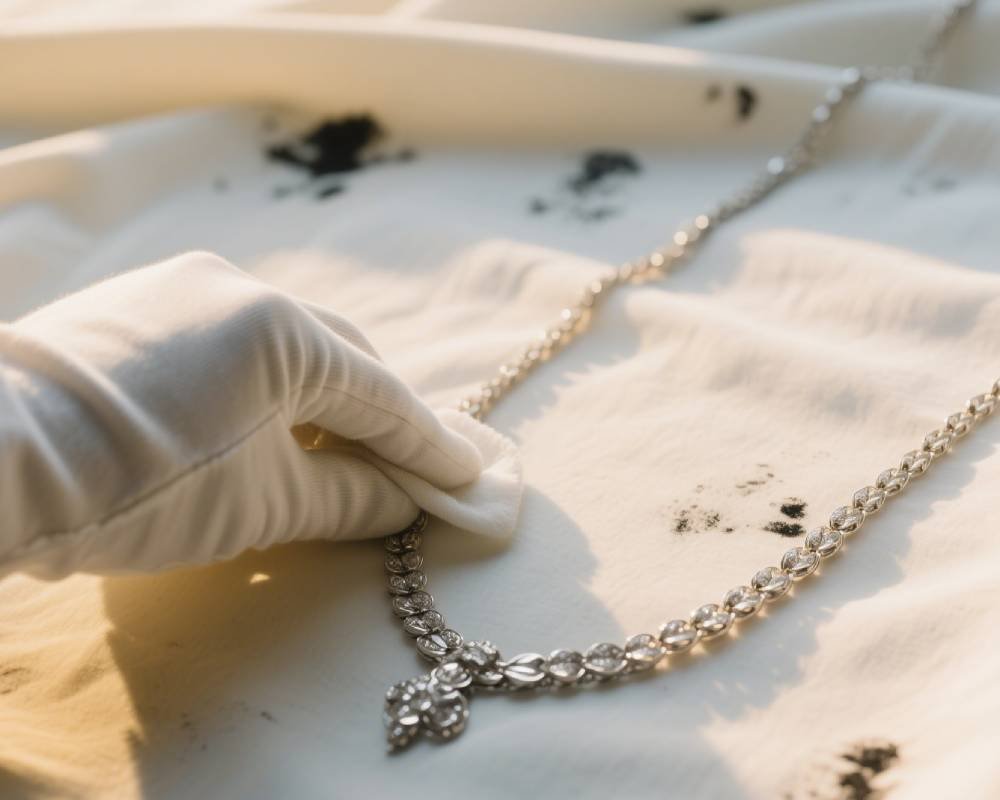
Method 7: Consult a reputable professional jeweler
When there is uncertainty or a significant purchase risk, seeking help from a professional jeweler is the safest choice.
How to choose a trustworthy jeweler:
- Whether it has CMA/CNAS national accredited testing qualifications.
- Whether it is equipped with professional equipment such as XRF fluorescence analyzer, hydrometer, spectrometer, etc.
- Whether it can issue a third-party test report or stamped invoice.
- Whether it is a well-known brand certified store, member unit or chamber of commerce member.
✅ Applicable scenarios: For large transactions, collection-level silver jewelry, inheritance or gifting, etc., this method is recommended to ensure authenticity.
| Start Your Custom Order | Email: info@fulcol.com | Number: +86 13055603907 |
925 silver jewelry is loved by consumers around the world for its softness, flexibility and high cost-effectiveness. However, counterfeits in the market also make many consumers confused or even deceived when purchasing.
There are a lot of real and fake 925 silver jewelry on the market, which makes it difficult for consumers to choose. However, through the 7 practical methods provided in this article – from mark identification to instrument detection, to brand judgment and professional verification, each can provide a solid basis for identifying authenticity.
As a professional 925 silver custom fashion jewelry manufacturer, Fulcol is committed to providing real, standard, high-quality sterling silver jewelry. We support OEM/ODM customization, transparent and traceable product alloy ratios, and formal inspection certificates are attached to the factory to ensure the trust and experience of every customer.
If you are looking for a reliable 925 silver jewelry supplier, please contact Fulcol for samples and one-to-one customization quotes. Let silver identification become simple, starting now.
